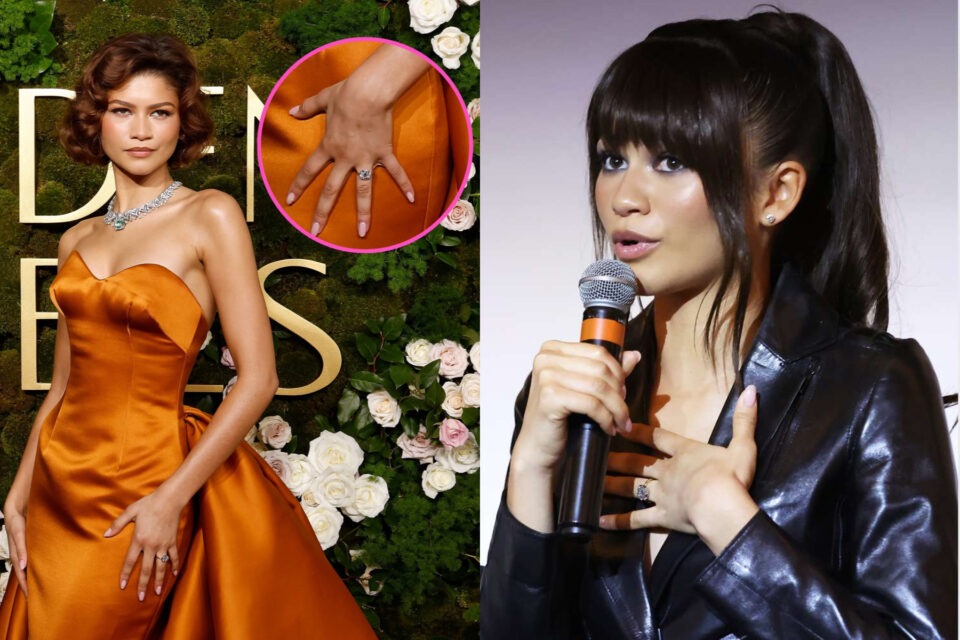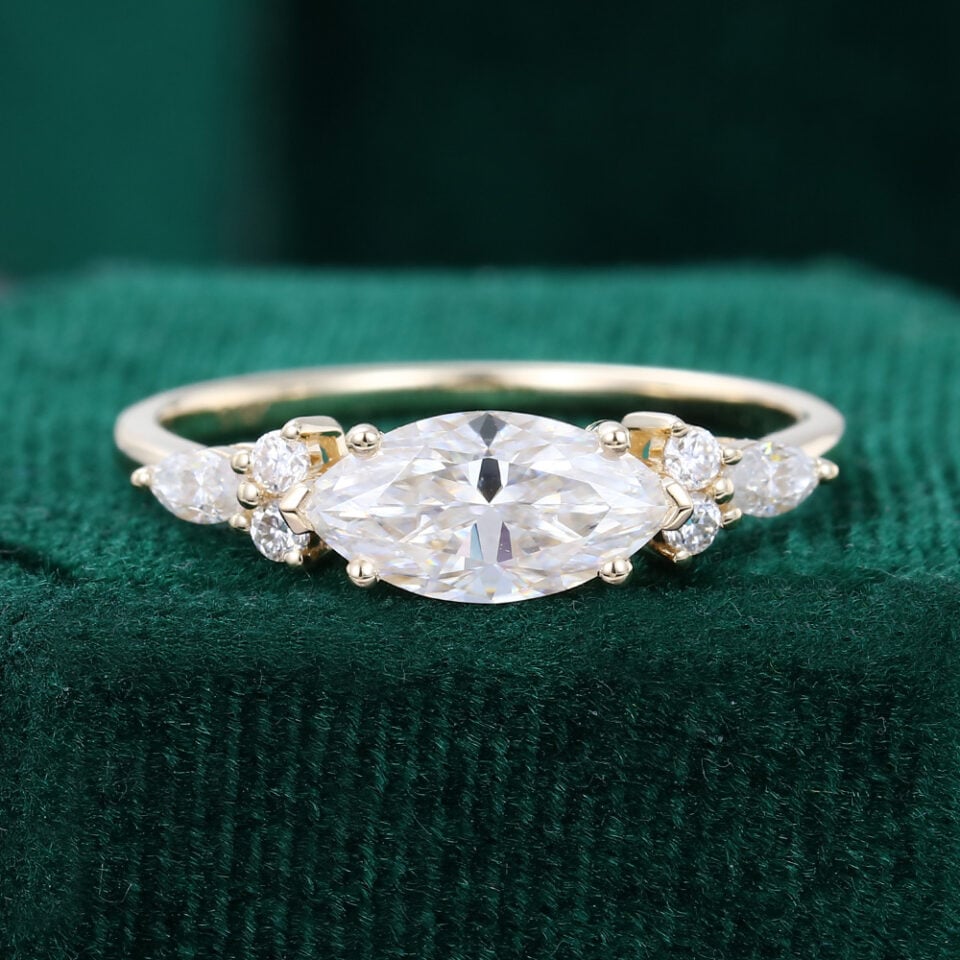Did Zendaya’s engagement ring catch your eye? Featuring a cushion-cut solitaire diamond, her ring stands out from traditional vertically set engagement rings – it’s set in an East-West orientation. With the buzz created by her star power and wide media coverage, this setting has become one of the top engagement ring trends for 2025. In this article, we’ll explore what an East-West setting is, the symbolism behind East-West engagement rings, and which center stone shapes work best with this design.

What Is an East-West Set Engagement Ring?
An East-West engagement ring features a center stone set horizontally on the band, with the longer axis of the stone running parallel to the finger. This design breaks away from the traditional vertical setting, allowing the stone to extend across the finger. The result is a unique modern look with a personalized twist.
The History of East-West Set Engagement Rings
The concept of East-West engagement rings dates back to the Art Deco era, when horizontally set diamonds were a popular design choice. Over time, the style faded from the mainstream. However, with the recent resurgence of vintage-inspired fashion and the growing demand for personalized jewelry, East-West engagement rings have made a strong comeback thanks to their distinctive aesthetic.
One major moment that helped reignite interest in this style was Zendaya’s East-West engagement ring, as mentioned earlier. As a well-known singer and actress, her star power quickly sparked young people’s enthusiasm for East-West setting designs.
What Does an East-West Engagement Ring Symbolize?
Engagement rings have always symbolized love and commitment, but the East-West setting adds layers of individuality and style to that meaning.
- Independence and Individuality: The horizontal setting breaks from tradition, representing a wearer who embraces uniqueness and a non-conventional lifestyle.
- Balance and Harmony: The gemstone’s alignment with the band creates a sense of visual balance and harmony, symbolizing mutual understanding and support in a relationship.
- Fusion of Modern and Traditional: The East-West setting combines modern aesthetics with classic craftsmanship, symbolizing a love that honors tradition while boldly moving forward together.
- Visual Extension and Limitless Possibilities: The horizontal stone elongates the appearance of the ring, signifying limitless possibilities and shared growth in love.
Which Stone Shapes Work (or Don’t Work) for East-West Settings
Interestingly, unlike traditional vertical settings, not all stone shapes are ideal for East-West settings. Want to know which ones work best and which don’t? Keep reading! 🙂
Stone Shapes That Work Well in East-West Settings
The following elongated gemstone cuts are particularly well-suited for East-West designs:
- Oval Cut: Its soft curves offer a graceful sense of elongation when set horizontally.
- Emerald Cut: The rectangular step-cut appears clean and modern in an East-West setting.
- Marquise Cut: Its pointed ends add a dynamic flair when placed horizontally.
- Pear Cut: The single pointed tip creates a unique sense of symmetry when set East-West.
- Radiant Cut: This cut blends the shape of an emerald cut with the brilliance of a brilliant cut, making it great for a horizontal setting.
- Rectangular Cuts (like the Baguette Cut): Their geometric symmetry looks sleek and refined in an East-West orientation.
These shapes highlight the distinct lines and cut of the gemstone, enhancing the ring’s visual impact when set horizontally.
Stone Shapes That Are Less Ideal for East-West Settings
On the other hand, the following gemstone shapes may not be the best fit for an East-West design due to their symmetry or lack of a defined lengthwise axis:
- Round Brilliant Cut: Its perfectly symmetrical round shape looks the same no matter how it’s set, making the East-West orientation less noticeable.
- Square Cuts (like Princess Cut): Similarly, their symmetry means there’s little visual difference between vertical and horizontal settings.
Overall, East-West designs shine best with gemstone shapes that have a clear long axis – this helps showcase their unique beauty and make a bold style statement. So, did you guess any of these right?
Pros and Cons of East-West Engagement Rings
Pros:
- Unique and Modern Design: The horizontal setting breaks away from traditional norms, giving the ring a bold, contemporary appeal.
- Makes the Stone Appear Larger: The horizontal layout creates a wider visual effect, making the center stone look more substantial.
- More Affordable: Since East-West settings are less commonly sought after than vertical ones, they’re often more budget-friendly.
Cons:
- Can Make Fingers Appear Shorter: The horizontal design can make fingers look wider or shorter, which may not be flattering for everyone.
- Requires Higher Stone Quality: Because horizontal settings can draw more attention to inclusions or color inconsistencies – especially in step cuts like emerald – higher-quality stones are recommended.
- Lower Market Recognition: Compared to classic styles, East-West rings are still niche. Some may see them as too unconventional, particularly for traditional wedding settings.
Are East-West Engagement Rings Worth Buying?
If you’re asking this question, chances are you’re already intrigued. So, should you go for it? Does this style suit you? Consider the pros and cons above – and most importantly, listen to your heart.
Ready to choose an East-West engagement ring? Explore our stunning engagement ring collection or contact us for a custom design.


